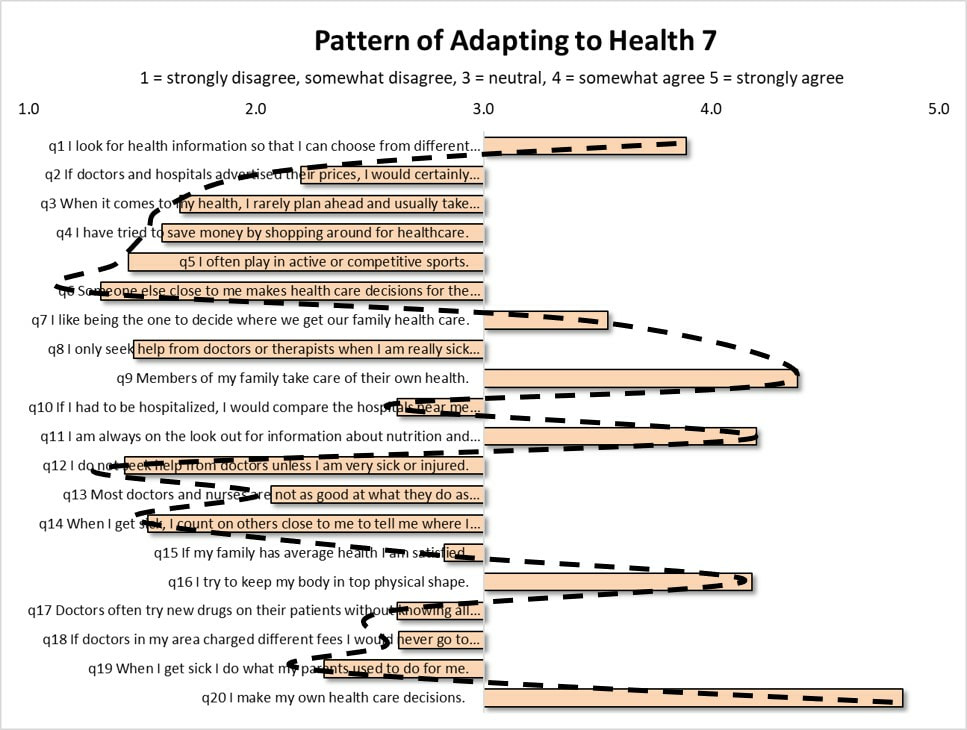 Are we really able to choose to improve our health? How much can we really change our behavior in order to get healthy? The assumption of many government initiatives to improve health is that individuals are able to choose to change their health-related behavior in ways that positively affect their health. Looking on a case by case basis, some people can and do change. Some obese individuals are able to change their eating behavior and lose weight. Some individuals with Type 2 diabetes can improve their self-management of the condition leading to better health outcomes. Some individuals do increase their levels of physical activity to improve health. The truth is, unfortunately, the majority of individuals do not change. They remain adherent to the same behaviors and habits regardless of down-stream harm to health. Why? Non-conscious Constraints on Health-Related Behavior. Data collected over the past twenty years has consistently shown that the health-related behavior of adults conforms to a stable system of patterns. Within the United States, the same system of patterns is found no matter where you look. The patterns are found across all adult age groups, ethnic, and socio-economic segments. For example, about 13% of adults consistently conform to the pattern in the figure below, called Pattern of Adapting to Health (PATH) 7. The key thing to note about this pattern is that those adults who conform to it do so without their knowledge. This fact is extremely relevant to health. Here's why. As adult health-related behaviors conform to this pattern at increasing levels, rates of diagnosed disease increase, demand for prescription drugs increase, and overall medical expenditures levels increase. The presence of this PATH 7 pattern of health-related behavior among adults is associated with many of the worst health outcomes and costs. While an individual may be able to change one or two health-related behaviors, he or she is not able to change or resist the health effects of these larger patterns underlying behavior for one simple reason: the patterns operate outside of conscious awareness. The patterns influence health non-consciously. Basically, no one knows their health-related behavior is conforming to a pattern. The bottom line. As people exercise their free will around health, health behavior is nonetheless constrained to a pattern that can generate its own diverse impacts on health outside the knowledge of each individual. This underscores a major flaw in government initiatives seeking to promote positive health behavior change; namely, the assumption that individuals: 1) know what behaviors to change, and 2) how to change them? In the case of these patterns of adapting to health, three issues must be resolved to make headway: first, what hidden pattern of health-behavior is any given individual following; second, are the dominant health impacts associated with this pattern positive or negative, and third, how do these individuals go about changing the pattern they follow, if that is even possible?
1 Comment
5/3/2020 12:20:57 am
Now that there's a threat of Covid-19 in everyone's health, we need to boost our immune system to fight the virus. There are a lot of ways to boost our immune system. We must eat a well balanced food, take supplements, have an exercise at least 3 times a week, ensure to have an 8 hours sleep and avoid too much stress. Let us all equip ourselves with the facts about the Corona Virus and how to avoid it. Always communicate with family and friends to help our mental health. Lastly, always pray to God for his guidance and healing.
Reply
Leave a Reply. |
AuthorFrederick H. Navarro, PhD. Archives
March 2019
Categories |
|
Copyright © 2017 PATH Institute
|
Website by RyTech, LLC
|

 RSS Feed
RSS Feed

